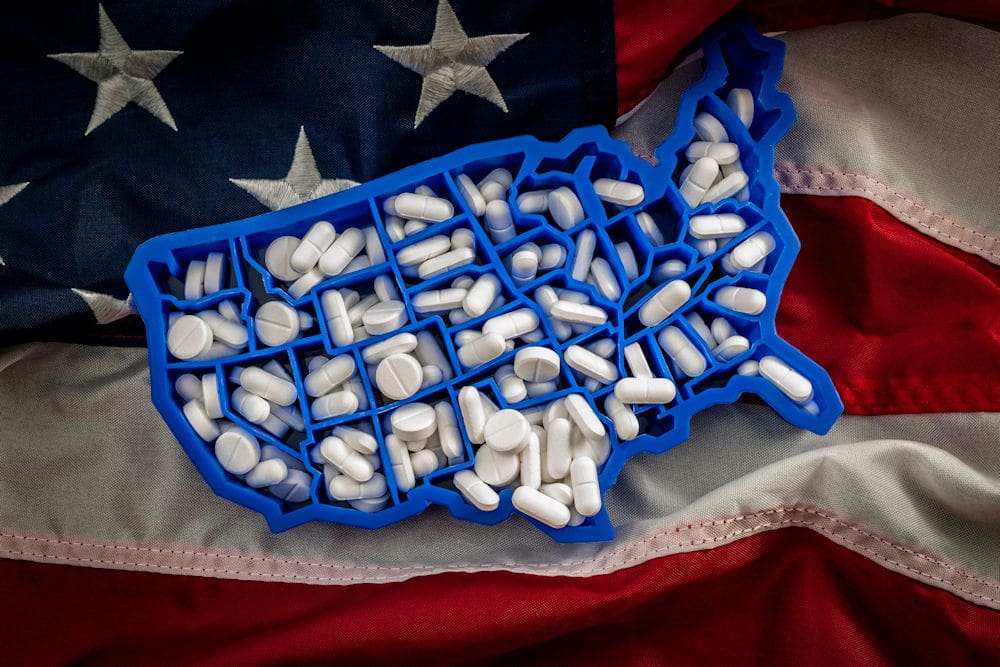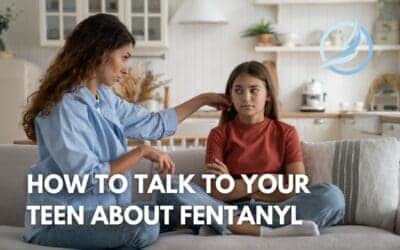You’ve probably heard scary stories about fentanyl in the news. This powerful opioid is fueling a crisis of overdoses and deaths in Maryland and across the country. In 2022, fentanyl was involved in 2,051 fatal overdoses, accounting for approximately 79.5% of total fatal overdoses. Additionally, a study conducted in 2021 revealed that fentanyl use was identified in 77.14% of adolescent overdose deaths in Maryland.
As an illicit street drug, fentanyl comes in many forms, some of which can be lethal just from skin exposure or inhalation. You need to know the facts about this potent substance, how to recognize an overdose, and what to do if you or someone else is exposed. In this article, we’ll give you the lowdown on fentanyl, the risks of coming into contact with it, and how to get medical help immediately. The more informed you are, the better prepared you’ll be to avoid a tragedy. The Freedom Center in Gaithersburg, Mayland offers a fentanyl treatment program to help people recover from addiction.
Why Is Fentanyl So Dangerous and What Exactly Is It?
Fentanyl is an extraordinarily potent synthetic opioid, with a potency 50–100 times greater than morphine. While initially developed as a pain management medication for cancer patients, it is also commonly used in hospitals for pain relief. When administered responsibly by trained healthcare professionals, such as doctors, nurses, and pharmacists, fentanyl can be an effective tool in alleviating pain for patients. However, it is important to remember that, due to its extremely potent and euphoric effects, fentanyl has regrettably grown in popularity as an adulterant in heroin and other illegal drugs. This misuse and illicit use of fentanyl pose significant risks to individuals and contribute to the ongoing opioid crisis.
The most common forms are pills, powders, and lozenges. Powdered fentanyl is often mixed with other drugs, such as heroin or cocaine, without the user’s knowledge, making it much more dangerous. Even a tiny amount of fentanyl, as little as two grains of salt, can be lethal.
Fentanyl is dangerous due to its ability to depress the respiratory system. At high doses, it can cause a significant slowing of breathing, potentially leading to respiratory failure. Additionally, fentanyl has the potential to lower blood pressure and heart rate. Common effects of fentanyl use include drowsiness, confusion, and a state of unconsciousness.
Fentanyl is an alarming threat we must work to curb. Education and community support are key. By understanding the risks and learning appropriate safety protocols, we can play a vital role in saving lives. Together, through our collective actions, we have the power to make a significant difference in mitigating the impact of fentanyl and ensuring the well-being of our communities.
What are the Risks of Airborne Fentanyl Exposure?
Fentanyl is a highly potent opioid that can be lethal even in very small amounts. Exposure to airborne fentanyl particles or touching the substance with your bare skin poses severe risks.
Respiratory Depression
Fentanyl can cause severe respiratory depression, leading to slow or shallow breathing or even respiratory arrest. When fentanyl is inhaled, it can quickly enter the bloodstream, affect the central nervous system, and possibly cause a life-threatening respiratory depression.
Accidental Overdose
Even tiny amounts of fentanyl can be highly potent, and exposure to airborne particles can lead to an accidental overdose. The substance can be absorbed through the skin, mucous membranes, and inhalation, making it dangerous for individuals who come into contact with airborne fentanyl without proper protection.
Cross-Contamination
Airborne fentanyl particles can settle on surfaces, leading to cross-contamination. If someone unknowingly touches a contaminated surface and then touches their mouth, nose, or eyes, they may inadvertently introduce the drug into their system, potentially resulting in an overdose or other adverse effects.
Sensitization
Repeated or chronic exposure to airborne fentanyl can potentially sensitize individuals to the drug, increasing their risk of adverse reactions even at lower exposure levels in the future. Sensitization can make individuals more susceptible to respiratory depression or other fentanyl-related complications.
Health Hazards for First Responders
First responders, such as law enforcement officers, firefighters, and medical personnel, who come into contact with fentanyl during emergency situations are at increased risk. Accidental exposure to airborne fentanyl can occur during drug raids, arrests, or medical interventions involving suspected or confirmed fentanyl use, potentially putting their health and safety at risk.
To mitigate these risks, be aware of your surroundings, and avoid direct contact with the substance as much as possible.
Can Fentanyl Be Absorbed Through the Skin?
The short answer is yes; fentanyl can be absorbed through skin contact. Any form of fentanyl can be dangerous to handle directly. Powdered fentanyl, in particular, poses a high risk of accidental skin exposure and overdose.
Fentanyl patches
Fentanyl patches are designed to release fentanyl directly into the bloodstream through the skin at a controlled rate. According to ACMT and AACT, if fentanyl patches were applied to the palms of your hands, it would take approximately 14 minutes to absorb 100 mcg (micrograms) of fentanyl. These calculations rely on a body surface area of 17,000 cm2, a palm surface area equivalent to 0.5% of the total, and a presumed fentanyl absorption rate of 2.5 mcg/cm2/h.
If a patch is cut or damaged, it can release fentanyl much more quickly, increasing the risk of overdose. It’s critical to properly dispose of used fentanyl patches to prevent others from handling them.
Fentanyl powder
Powdered fentanyl can easily contaminate surfaces and be absorbed through the skin. According to the DEA, as little as 2 milligrams of fentanyl powder can be lethal, depending on a person’s body size. Airborne fentanyl powder is also extremely dangerous to inhale. Law enforcement officers have overdosed during drug raids just by inadvertently inhaling small amounts of airborne fentanyl powder.
Can Touching Fentanyl Kill You?
While uncommon, fentanyl exposure through skin contact or inhalation can be fatal, especially for infants, children, and adults who have not developed a tolerance to opioids. Fentanyl is readily absorbed through the skin and respiratory system. Symptoms of overdose include extreme sleepiness, confusion, slowed breathing, and loss of consciousness. Seek medical help immediately.
To avoid risks from airborne or skin exposure
- Do not touch any form of fentanyl with bare hands. Use gloves and wash hands thoroughly after removing gloves
- Do not inhale or snort fentanyl powder. Only handle under a fume hood or in a well-ventilated area.
- Wear an N95 respirator mask, goggles, and gloves when in contact with or near fentanyl powder.
- Remove and wash clothing that may have come into contact with fentanyl. Immediately after, take a shower.
- Carry naloxone, an opioid overdose-reversing drug, in case of accidental exposure. Administer naloxone and call 911 for emergency help right away.
- Teach others about the risks of fentanyl exposure and overdose. Promote safe practices for handling and disposal.
By exercising extreme caution, educating others, and having the proper safety gear and overdose response tools on hand, the risks associated with exposure to fentanyl can be minimized. But the most important steps are to avoid contact with fentanyl altogether if at all possible and get emergency medical help immediately if exposure occurs.
Fentanyl Overdose: Symptoms and What to Do
If someone overdoses on fentanyl, it’s critical to recognize the symptoms and get them medical help immediately. Their lives depend on fast action.
Symptoms of a fentanyl overdose include:
- Loss of consciousness or unresponsiveness
- Slow, shallow breathing, or no breathing at all
- Extreme sleepiness or drowsiness;
- Confusion or strange behavior
- Pinpoint pupils
- Pale, blue, or cold skin
What should you do if you encounter someone who is overdosing?
- Call 911 right away. Fentanyl overdoses can be fatal without swift medical attention.
- Administer naloxone (Narcan) if available. Naloxone is an opioid overdose reversal drug that can restore normal breathing.
- Perform rescue breathing. If the person has stopped breathing, give them mouth-to-mouth resuscitation, or CPR.
- Keep the person warm. Remove any stimulants from the area and keep the person warm until emergency responders arrive.
- Do not leave the person alone. Keep the person close until emergency help arrives.
- Provide details to emergency responders. Let paramedics know if naloxone was administered, the estimated time of the overdose, and any other details that could help determine treatment.
A fentanyl overdose is life-threatening, but with fast action, the effects can be reversed and life can be saved. Recognizing the signs, calling for help, administering first aid like rescue breathing or naloxone, and providing critical details to emergency responders are the steps to take in this emergency situation. If you encounter someone experiencing these symptoms, don’t delay; call 911 right away. Their life is in your hands.
Receive Fentanyl Addiction Treatment at The Freedom Center

At The Freedom Center, we provide comprehensive and compassionate fentanyl addiction treatment to individuals seeking recovery. Our devoted team of medical specialists is committed to assisting people in overcoming the difficulties of fentanyl addiction and regaining control over their lives. We offer a range of evidence-based therapies and interventions tailored to meet each person’s unique needs. Our treatment approach combines medical detoxification, individual and group therapy, counseling, and holistic modalities to address the physical, psychological, and emotional aspects of addiction. Contact us right away to find out more about our programs!
References:
https://health.maryland.gov/vsa/Pages/overdose.aspx
https://www.ncbi.nlm.nih.gov/pmc/articles/PMC6507002/
https://www.marylandmatters.org/2022/05/04/opioids-killed-thousands-of-maryland-residents-in-2021/
https://www.medstarhealth.org/services/drug-overdose-prevention
https://health.ucdavis.edu/news/headlines/can-fentanyl-be-absorbed-through-your-skin/2022/10
https://www.ncdhhs.gov/documents/fentanyl-information-1st-responders-final/download
https://www.dea.gov/factsheets/fentanyl
https://health.ucdavis.edu/blog/cultivating-health/fentanyl-overdose-facts-signs-and-how-you-can-help-save-a-life/2023/01
https://americanaddictioncenters.org/fentanyl-treatment/symptoms-associated-with-a-fentanyl-overdose
https://nida.nih.gov/publications/drugfacts/fentanyl































